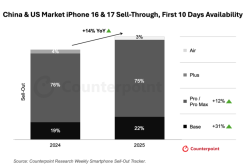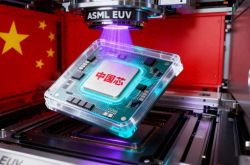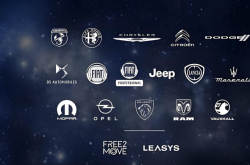Celebrate DeepSeek's Milestones without Overshadowing Shen Gongbao
![]() 03/07 2025
03/07 2025
![]() 605
605

Prejudice stands as an insurmountable barrier.
Manual Labor / Dig Brother
Manual Editing / Angle Uncle
Produced by / Unicorn Observer
As the new year unfolds, China's AI landscape has witnessed a whirlwind of transformation. DeepSeek's emergence, with its open-source strategy, has created ripples across the AI battlefield, reshaping the industry's competitive terrain and evoking a mixed response of admiration and scrutiny.
Whether it's internet giants or fellow AI startups, DeepSeek's debut has not only influenced the market and intensified funding pressures but also attracted a share of public ridicule.
Amidst the fervent discussion about "who will be the next OpenAI," a pivotal question emerges: In the midst of technological evolution, should we allow prejudice to divide the endeavors of different enterprises, or should we foster an open and inclusive mindset to collectively bolster China's AI competitiveness?
01 DeepSeek's Remarkable Impact
Early in 2023, whispers circulated in the industry about Kuaishou's official foray into the financial sector. By the end of the year, Kuaishou further solidified its financial ambitions, actively recruiting talent across risk control compliance, supply chain finance, and other domains.
DeepSeek's arrival can be deemed a "monumental event" in China's AI evolution.
With its DeepSeek-V3 model, it achieves performance on par with GPT-4 at a fraction of the cost ($5.576 million), and the democratization of technology fostered by its open-source strategy has swiftly positioned DeepSeek at the heart of the global developer ecosystem.
Its R1 model soared to the top of the Apple App Store's global download charts upon release, even causing a one-day 17% drop in chip giant NVIDIA's stock price, sending shockwaves through the industry. This "low cost + high performance + open source" combination not only propels DeepSeek to technical breakthroughs but also fortifies an unassailable position in the commercial ecosystem.
However, DeepSeek's success is not an isolated achievement. Behind it lies the AI industry's collective reevaluation of the "superstition of high computing power."
Academician Li Guojie emphasized that DeepSeek significantly reduces training costs and memory footprint through algorithmic optimizations and architectural innovations (like the Mixture of Experts (MoE) model and the Multi-head Latent Attention (MLA) mechanism), challenging the industry's unspoken rule of "computing power as supremacy." This shift in technological pathways pressures enterprises reliant on the "pile on computing power" strategy, particularly AI startups like the "Six Little Dragons."
According to various sources, companies like ZeroOne and Baichuan Intelligence are experiencing core team departures and business transformations due to lagging technological advancements.
Even technology giants such as Tencent and Alibaba have had to redirect planned multibillion-dollar budgets originally earmarked for self-developed mega-models towards DeepSeek ecosystem adaptation. Today, accessing DeepSeek has become a standard requirement for large enterprises' mega-models.
02 The Formidable Barrier of Prejudice
DeepSeek deserves heartfelt applause, particularly for its OpenAI-rivaling performance, positioning us firmly in this race for future technological leadership.
However, alongside DeepSeek's popularity, other domestic AI mega-models diligently exploring their paths have been subjected to ridicule or dismissal.
A prime example is Baidu. As China's earliest technology giant to invest in mega-model research and development, Baidu once dominated the market with ERNIE Bot. Nonetheless, DeepSeek's ascendancy has cast it in a contradictory light, seen as both a "technological leader" and a "market laggard."
When Li Yanhong unveiled ERNIE Bot, China's first mega-model, in 2023, he likely didn't foresee falling into a public opinion maelstrom of "early but late" two years later.
Even Li Yanhong's previous assertion, "Don't compete in models, compete in applications," has been frequently cited, seemingly refuted by DeepSeek. Even the founder of OpenAI echoed a similar sentiment: "It's challenging to have another breakthrough product akin to GPT-4 in the large model realm."
"Prejudice in people's hearts is a formidable mountain, impossible to move, no matter how hard you try." Just like Shen Gongbao's plight in "Nezha 2," after Chentang Pass was massacred, everyone blamed Shen Gongbao due to his previous "villain image," fostering deep-rooted prejudices among viewers and characters.
People are prone to forming fixed, one-sided perceptions based on preconceived notions, leading to unfair and incomplete evaluations of individuals like Shen Gongbao.
Within the global paid user base of AI products, Baidu Wenku ranks among the top worldwide. Including the recently popular Manus, this full-process AI agent is considered another pinnacle of Chinese AI applications.
At this juncture, few recall that at Baidu World 2022 in November, Li Yanhong presciently stated: "Agents are the most mainstream form of AI applications and are on the cusp of a breakthrough."
In truth, whether it's internet giants like Baidu, the "Six Little Dragons" of AI, or lesser-known Chinese technologists, they have all diligently ventured into uncharted territories on the path of AI mega-models. While we celebrate game-changers like DeepSeek, we must also show utmost respect to other dream chasers.
03 China's AI: A Collective Breakthrough Path
The controversy surrounding DeepSeek essentially stems from differing technology evaluation standards. As the public and media engage in enthusiastic "liking" or "praising and criticizing," we must be vigilant against the detrimental effects of this binary opposition mindset on the industry ecosystem.
As Academician Li Guojie stated, "DeepSeek's success isn't about how smart the team is but about finding another path." This diversity of paths is the core strength of China's AI industry.
Observing the success stories of the "Six Little Dragons" in Hangzhou, it's evident that the breakthrough of innovative technologies necessitates the collaborative support of "policy-capital-media." Cases like Unitree Robotics' robot dog appearing on the Spring Festival Gala and Game Science's "Black Myth: Wukong" garnering global attention demonstrate that technological value isn't solely reflected in laboratory data but also in its ability to resonate with popular demand. DeepSeek's open-source strategy serves as a crucial bridge in bringing technology from the "ivory tower" to the masses.
On a deeper level, the essence of AI competition isn't a zero-sum game of "winner takes all" but an ecosystem competition. After Tencent's Yuanbao integrated with DeepSeek, it topped the download charts within 17 days, and Alibaba's Tongyi Qianwen was embedded in e-commerce scenarios. These examples illustrate that the value of mega-models lies in their deep integration with vertical fields. As the industry shifts from "technological competition" to "scenario competition," each enterprise's exploration becomes a "brick" in the AI ecosystem.
DeepSeek's rise is both a milestone in China's AI technological innovation and a call for industry ecosystem reconstruction. In this era of transformation, what we need isn't prejudice-driven team-taking but collective wisdom transcending individual gains and losses. Only by embracing an open and inclusive mindset, encouraging technological path diversity, and supporting different enterprises' exploration and trial-and-error can China's AI carve its own path in "uncharted territories."
In this AI race concerning national fortune, the eventual outcome might mirror the aerospace field's "Starlink Plan"—not reliant on a single super satellite but a coordinated network comprising thousands of functionally diverse satellites.
While DeepSeek swiftly advances in the general intelligence race, Unitree Robotics' robots inspect Singapore's power grid, and CloudMinds' Absolute Zero X30 becomes a standard in industrial scenarios. These breakthroughs across various fields collectively form China's "constellation ecosystem" of AI. (End)








